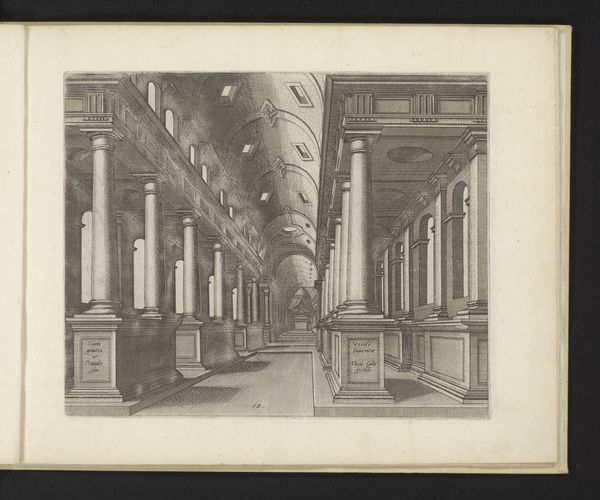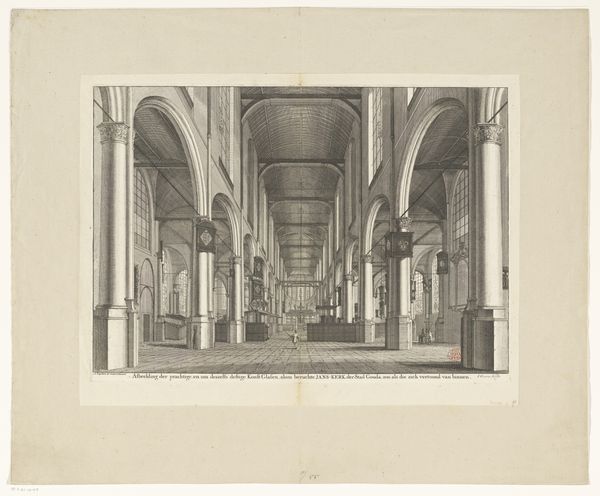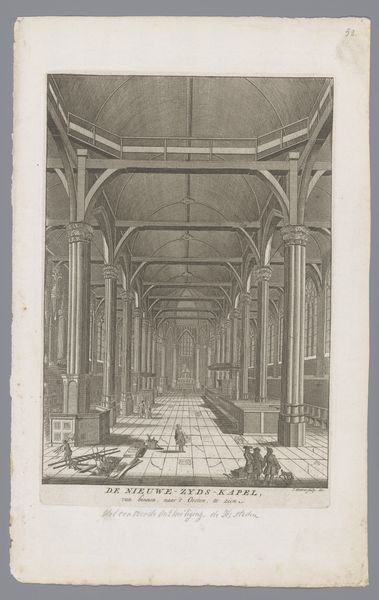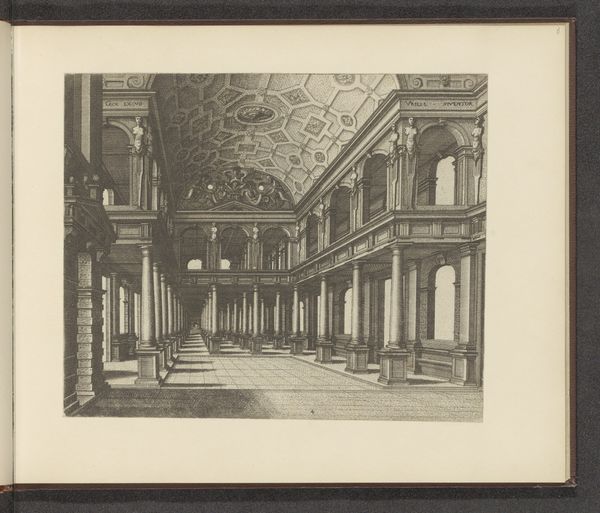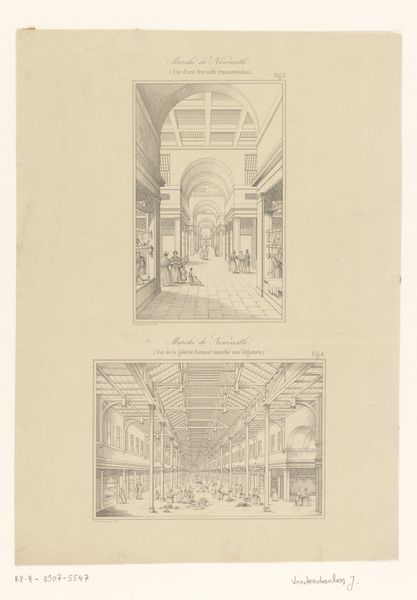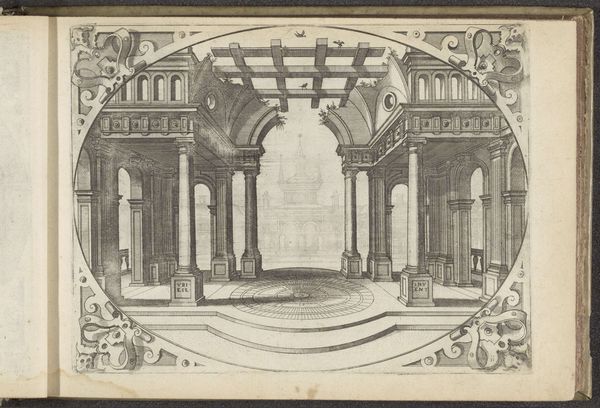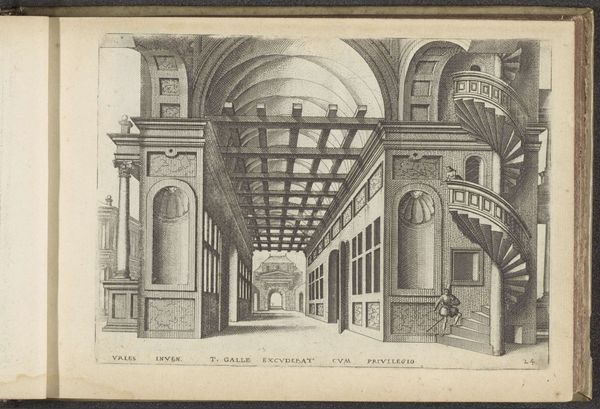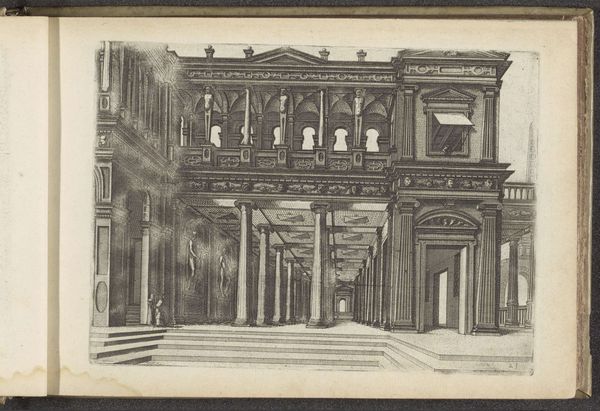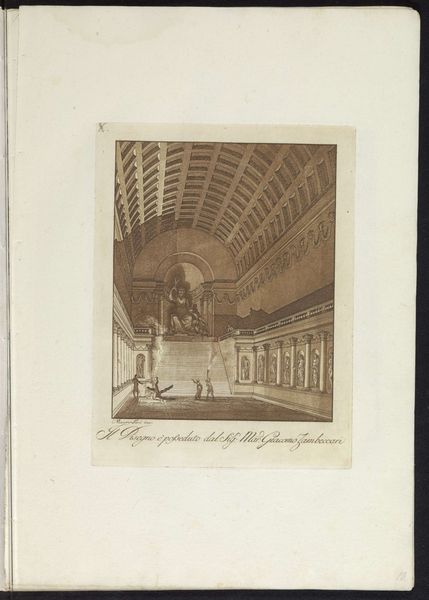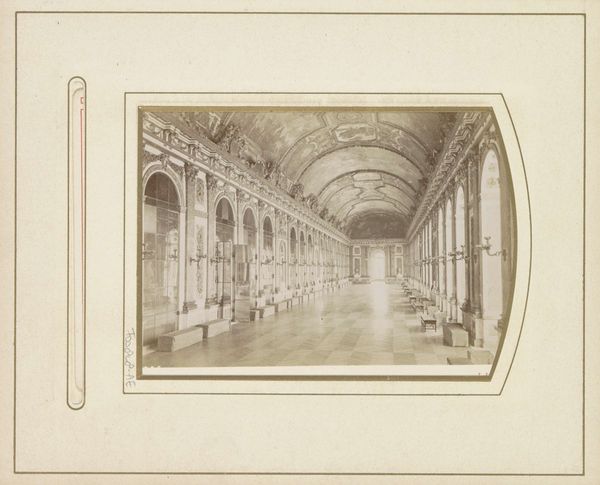
De draaijerij van de werkplaatsen op het Station te Samarang / gedeeltelijk met de pannen gedekt 1865 - 1867
0:00
0:00
photography, collotype
#
asian-art
#
landscape
#
photography
#
collotype
#
constructionism
#
realism
Dimensions: height 198 mm, width 248 mm, height 305 mm, width 450 mm
Copyright: Rijks Museum: Open Domain
Curator: This collotype, created by Woodbury & Page between 1865 and 1867, is titled "The Foundry of the Workshops at the Station in Samarang, partially covered with tiles". Editor: It has an almost theatrical starkness, doesn’t it? Those repeating pillars fade into the distance like some half-built temple. Curator: Absolutely. What draws my attention are the labor conditions implied within the framework, the social engineering inherent in a colonial infrastructure project of this scale. Consider the resources, the bodies, the sheer exertion… Editor: And then consider those figures standing amongst the bare tracks. They’re like actors paused mid-scene, aren’t they? Distant, spectral in their white suits against the skeletal bones of the structure. Gives me this quiet feeling of anticipation, or maybe of haunting… Curator: What's compelling about their aesthetic choice of collotype is its inherent ability to evoke sharp realism while imbuing a softness due to the printing process, obscuring the complex production behind the station's skeletal structures, almost like obscuring the labor in this photo. Editor: It’s a fascinating tension. You’ve got this harsh, industrial scene rendered with such ghostly delicacy, with strong shades and an almost ethereal quality to the distant end of the photograph. It feels as much like a dreamscape as a record of construction. Curator: Indeed. The choice of collotype as a means of capturing this rapidly transforming environment speaks to how technological advancements intersected with colonial ventures. The material reality mirrors the rapid development of the area in order to exploit its rich land and workforce. Editor: There's this odd beauty born of necessity, a utilitarian elegance in those repeating forms. Looking at it, one almost forgets the potential implications involved in its construction. It gives a pause for reflection, doesn’t it? Curator: A beautiful reminder to contemplate the forces, both human and mechanical, that shape our physical world. Editor: Agreed. It invites a quiet meditation on progress, legacy, and the stories etched into the very bones of a place.
Comments
No comments
Be the first to comment and join the conversation on the ultimate creative platform.
